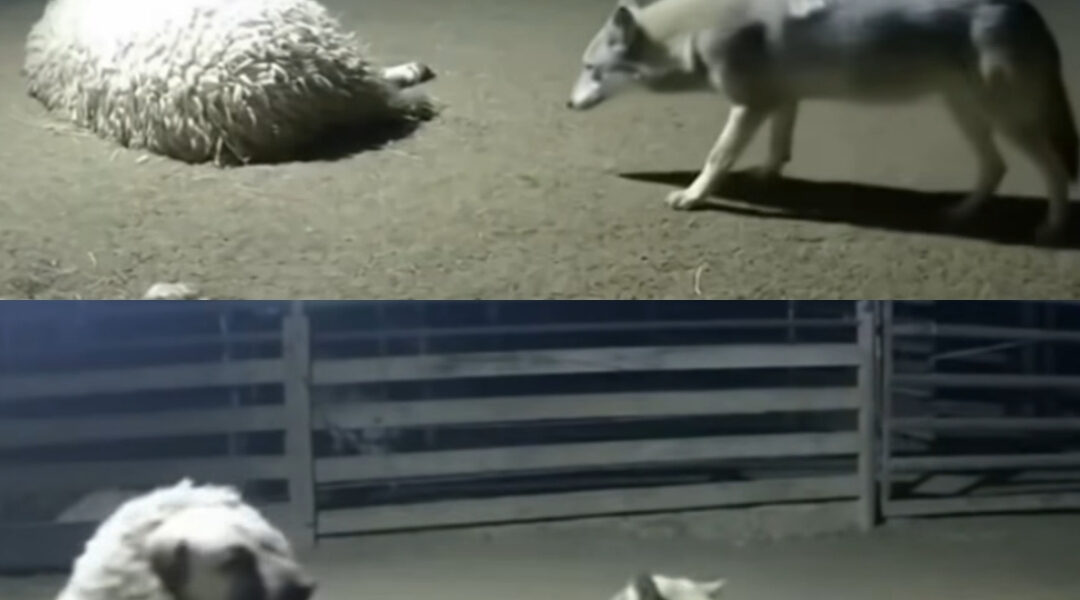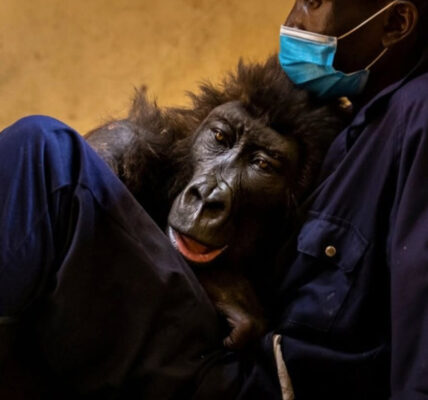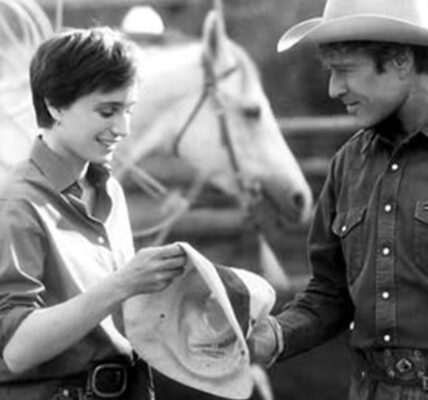Under the pale light of the moon, the barnyard was still. A soft wind brushed against the wooden fences, carrying with it the distant sound of crickets and the faint bleat of sleeping sheep. But in one corner of the pen, beneath a pile of wool and straw, something was not as it seemed.

It was no sheep.
It was Rufus, a loyal shepherd dog who had taken on a disguise. His thick coat was covered in a blanket of wool — a crude costume stitched together by his owner, old Farmer Dane. It wasn’t for amusement or trickery, but for survival.
For weeks, the farmer’s flock had been terrorized by a wolf that came down from the hills at night. No trap had caught it. No fence had stopped it. Each morning, Dane would find the signs of the night — scattered wool, paw prints in the dirt, and one less sheep to count. The wolf was cunning, fast, and always gone before dawn.
Rufus had watched it all. Every loss, every cry in the night. He had guarded the flock since he was a pup, but this predator was unlike any he had faced. It never came near when he barked. It hunted only when the dogs were called off, when silence returned.
So one evening, the farmer had an idea born of desperation. “Let’s give the wolf what it wants to see,” he said softly, stroking Rufus’s head.
And so, Rufus was wrapped in a disguise of wool and straw — a dog in sheep’s clothing. His job: to wait. To be still. To play the part.
That night, the wolf came.
Its eyes glowed faintly in the dark as it slipped through the shadows, silent as smoke. It scanned the pen, its nostrils flaring. To its sharp eyes, the dog in disguise was just another sheep — small, alone, and unaware.
The wolf crept closer, every step measured, every muscle ready to strike. Rufus didn’t move. His heartbeat quickened, but he stayed still, his eyes half-closed beneath the heavy wool. The air thickened. The wolf’s breath drew near.
And then — the wolf lunged.
But in that single instant, the “sheep” came alive. The wool flew from Rufus’s back as he sprang up, teeth bared, muscles coiled. The wolf froze — just a blink too late. Rufus hit it like thunder, the quiet night erupting in a flurry of growls, dust, and flashing eyes.
For minutes, they struggled — one fighting for hunger, the other for every life behind the fence. Rufus’s body bore scratches, his breath came heavy, but his determination never wavered. With a fierce shove, he drove the wolf back through the gate, chasing it into the darkness until its shadow disappeared into the trees.
When the barnyard fell silent again, Rufus limped back toward the pen. The sheep had huddled together, trembling — but safe. Under the dim moonlight, he stood guard, blood on his fur, the disguise torn to shreds beside him.
By morning, the farmer found him there — tired, bruised, but victorious. He knelt beside Rufus, tears shining in his weathered eyes. “You clever boy,” he whispered. “You saved them all.”
From that day on, no wolf ever came near the farm again. Word must have spread through the wild — of the sheep that turned into a beast, of the shadow that fought back.
And though the wool disguise was never used again, the legend of the dog who wore a sheep’s skin lived on in the valley — told by shepherds beside campfires and farmers beneath the stars.
They said that even the bravest predators learned fear that night — not from traps or guns, but from the loyalty of one creature who guarded the weak as if they were his own.
And somewhere, when the moon rises over a quiet field, perhaps the wolf still remembers — the night he met a sheep who had the heart of a lion.




